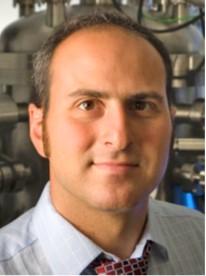Arutiun P. Ehasarian
Professor, Sheffield Hallam University, Sheffield, UK

Course Objectives
- Provide motivation for the use of plasmas in film deposition processes
- Understand the basics of plasmas, and especially condensable plasmas by arcs and HIPIMS
- Extend the fundamentals of conventional sputtering to high power impulse magnetron sputtering
- Provide examples of the implementation to film deposition, incl. film characterization and testing
Course Description
The course starts with a brief introduction to basic plasma and sheath physics, with emphasis on plasma sources for depositing plasma with significant metal ionization and gas activation. The operation of cathodic arcs and inductively coupled magnetron sputtering will be contrasted with the processes in conventional magnetron sputtering. Those points are the foundation for understanding the time-dependent processes in pulsed magnetrons. Emphasis is put on the high pulsed power case, when significant ionization of the sputtered material occurs, leading to the new technology of high power impulse magnetron sputtering (HIPIMS). The role of self-sputtering, magnetic confinement, secondary electron emission and plasma self-organisation is examined. The development of the morphology of thin films and their crystallographic texture is considered in relation to the metal ionization and in the context of reactive gas dissociation events. This technology is seen as enabling for efficient self- ion etching and self-ion-assisted film deposition on large areas or batches of substrates. The issue of power-normalized deposition rate is discussed. The course shows examples of HIPIMS coatings such as complex nitrides for hard and wear-resistant coatings, oxides for photocatalytic and biomedical applications and metal coatings for microelectronics and particle accelerators.
Course Content
- The evolution of ionized PVD techniques
- Sputtering: An introduction to the relevant physics of plasmas and sheaths
- Introduction to High Power Impulse Magnetron Sputtering
- Plasma self-organisation, discharge physics, ionization mechanisms and transport to the substrate
- Ion etching and interface engineering by using depositing HIPIMS plasmas
- Thin film nucleation and growth, microstructure evolution and texture evolution in HIPIMS
- Deposition and coatings by HIPIMS – Applications, deposition rates and economics
- Hardware and implementation
Who should attend?
This course is intended for engineers, scientists and students interested in Ionized PVD techniques.
Course Materials
Lecture notes will be provided.
Date/Time: Wednesday, April 29, 8:30 a.m.-4:30 p.m.
Cost: $500 Regular/$130 Student
